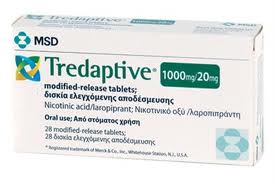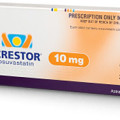by Dr. Neville Wilson.
( MODERN MEDICINE Vol 43, Number 2, 2013 – The Irish Journal of Clinical Medicine)
Statins are inhibitors of the enzyme (HMG-CoA) reductase, which catalyses the rate limiting step in cholesterol formation, reducing total and low-density lipoprotein (LDL) cholesterol concentrations, but also inhibiting the synthesis of several life-sustaining substances, thereby raising the potential for serious adverse events.
The debate revolves around whether such reductions translate into net health gains for persons without cardiovascular disease, or to increased risks for morbidity and premature mortality.
Critical evidence clearly supports the latter.
The Adult Treatment Panel (ATP) 111 identifies LDL-cholesterol as a primary target for cholesterol lowering, claiming “robust” evidence that LDL lowering therapy reduces risk for CHD. (1)
This view is embodied in policy statements of the National Cholesterol Education Programme (NCEP) and its target proposals, and reflected in its guideline directives for prescribing physicians. (2)
On the assumption that such guidelines are evidence based clinicians may seek confirmation from a recent meta-analysis of 27 statin trials that purports strong evidence for vascular disease risk reduction, for low risk and high risk patients, with statin therapy. (3)
The recent Lancet meta-analysis is a product of the Cholesterol Treatment Trialists (CTT) group and is a repetition of data, and similar conclusions, previously published by the same authors.
Their findings, however, are in contrast to those from the Cochrane Collaboration, which reports conflicting findings from 5 meta-analyses regarding mortality outcomes, and reports no mortality benefits in the statin group, concluding that “Statins do not have a proven net health benefit in primary prevention populations and thus when used in that setting do not represent good use of scarce health care resources”. (4)
Reviewing the CTT data (table 3) Ravnskov calculated that for persons without vascular disease, and risk 10%-20%, the chance of being alive after 5 years without a statin is 89.9%, and with a statin 90.7%.
For those with a 5 year risk less than 10% the chances of survival are equal for both groups, whether they have vascular disease or not. (5)
Data from these meta-analyses discount the claims of the ATP regarding “robust evidence” for risk reduction with statin therapy, and questions the validity of LDL targets for statin therapy.
Significantly, two prominent cardiologists have called for an abandonment of these proposals, on the grounds of “no scientific basis to support treating to LDL targets”. (6)
LDL is a mere surrogate measure, and has long been known to have limited value for estimating cardiovascular risk. (7) It is a calculation, and does not take account of its clinically significant quantitative subcomponents, small dense LDL, which have a greater propensity for oxidation, and subsequent athrogenicity.
Lowering LDL contributes very little to an estimation of cardiovascular risk, and may also compromise health and increase mortality in some patient groups.
Massive LDL reductions in ENHANCE (58% with Ezetemibe/ Simvastatin and 42% Simvastatin) failed to provide endothelial protection, with added cancer risk confirmed. (8)
In JUPITER, widespread claims of 43% risk reduction by rosuvastatin are not supported by actual data, with all cause mortality of 2.2% for rosuvastatin and 2.8% for placebo. These artificially inflated benefits are based on relative risk reductions, whereas realistic absolute risk reductions were a mere 0.59%, the difference between 1.36% (control) and 0.77% (rosuvastatin) in end point occurrence reduction. (9)
This insignificant benefit equates to number to treat (NNT) of 120 people requiring taking the drug for 2 years to prevent one stroke, heart attack or death.
Other examples of inflated reporting are the LRC-CPPT, where an ARR of 0.6% was touted as a 24% RRR in CHD, and a 19% RRR in non-fatal MI.
Similar inflated reporting was evident in MRFIT, WOSCOPS & AFCAPS/TexCAPS.
Cholesterol is vital for health and survival, and “high cholesterol” is not a disease that needs to be “treated”.
Framingham 30 year survival curves revealed longevity benefits with high cholesterol, with mortality rates for males older than 48 years no different for those with either high or low cholesterol levels.
The investigators reported an 11% increase in cardiovascular mortality for every 1% mg/dl decrease in cholesterol levels. (10)
Hepatic synthesis of cholesterol occurs in response to normal physiological requirements, which in many cases appear to be protection against sepsis.
Unhealthy lifestyles (smoking, obesity, inactivity, hypertension, stress, etc) raise blood cholesterol levels, and these causes should be addressed rather than resorting to pharmacological inhibition of a healthy protective mechanism.
The protective role of LDL in sepsis is well documented, (11) and the increasing incidence of ICU sepsis and mortality may be linked to widespread statin use, (12) as is also the increasing incidence of heart failure, attributed by some researchers to reduced mitochondrial coenzyme Q10 through statin inhibition. (13)
Numerous studies show an association between low cholesterol levels and increased mortality, (14) (15) (16) and the Iribarren thesis that low levels represent pre-existing disease is not supported by critical evidence. (17) (18)
Overwhelming experimental evidence supports the thesis that healthy persons with high cholesterol do not need statins.
Dr. Neville Wilson
Medical Director,
The Leinster Clinic.
July, 2012.
REFERENCES:
- www.nhlbi.nih.gv/guidelines/cvd
- Circulation 2004; 110:227-39
- Lancet 17 May, 2012 (CTT) doi 1016/61 s0140-6736 (12) 60367-5
- Therapeutics Letter 77/ March-April 2010.
- Cardio Exchange 5 June 2012, Dr. David Newman.
- Circ. Cardiovascular Qual Outcomes 201§2; 5; 2-5 (Hayward & Krumholtz).
- (a) Lancet 1997; 380:1178-9
(b) Annals Int Med 2006, 145; 520-530
(c) Circ Cardiovasc Qual Outcomes 2011; 4.337-345
8. Enhance Trial:
9. Jupiter Study: NEJM 2008; 359:2195-2207.
10. JAMA 24 April, 1987, p 2176-2180
11. NEJM 2003; 348: 1546-1554
12. QJM 2003, 90; 927-934
13. Biofactors 2003; 18(1-4): 101-113
14. Lancet 2001, Aug 4; 358(9279)
15. J Womens Health 2004. Jan-Feb 13(1)
16. Lancet 1997: 350; 119-1123
17. Lancet 2001; 358 (927d) 351-5 Schatz, U.
18. J Am Cardiol 2008; 52(14) 1141-7
—————————————————————–




